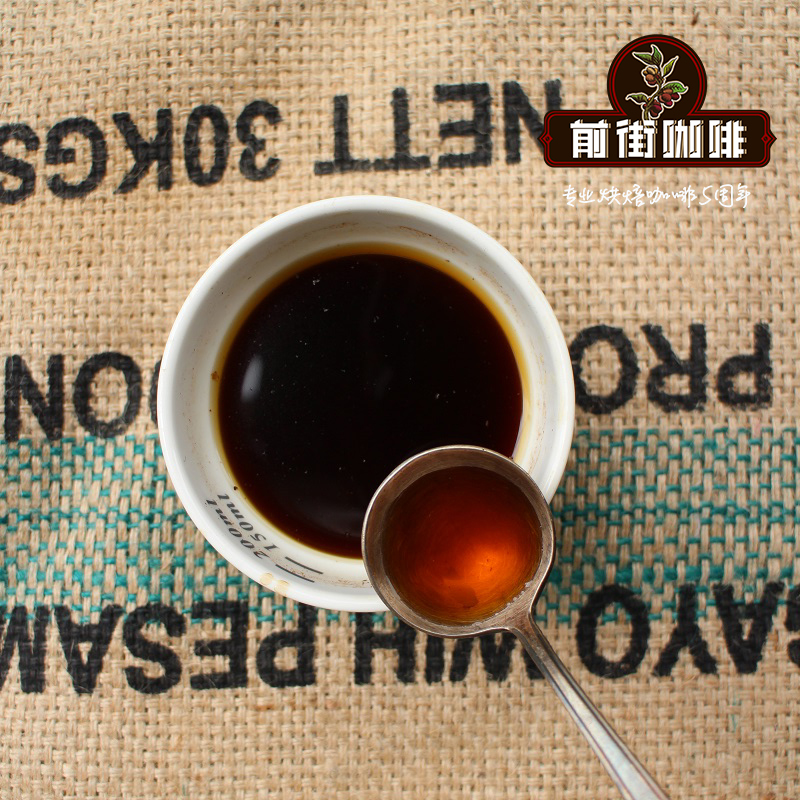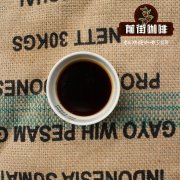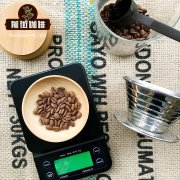What are the coffee producing areas in Peru? The characteristics of Peruvian coffee beans? How do you make Peruvian coffee?

Professional coffee knowledge exchange more coffee bean information please follow the coffee workshop (Wechat official account cafe_style)
Peruvian coffee is of high quality and balanced and can be used for mixed drinks.
Peru is located in western South America, with a coastline of 2254 kilometers, a dry and mild climate, suitable for coffee cultivation, and other natural environments, including the world's longest Andes, tropical rain forests, unique hills, and dry deserts. Huge and diverse land allows Peru to produce a large number of coffee beans with different flavors, so Peru is now second to Brazil and Colombia. The Latin region's third largest coffee producer and exporter ranked 12th in the world in 2016 in terms of the value of coffee exports.
Although coffee is an often forgotten coffee producer, Peru is no stranger to coffee cultivation, nor is it a small-scale coffee producer. In fact, Peru is the tenth largest coffee producer in the world in 2017, is one of the first countries in the Americas to receive coffee, and is generally considered to be a producer of special beans. Peruvian coffee is not weak-the country's history is worth exploring and its beans are worth enjoying.
The land produces high-quality coffee.
Peru is located in western South America, with a coastline of 2254 kilometers, a dry and mild climate, suitable for coffee cultivation, and other natural environments, including the world's longest Andes, tropical rain forests, unique hills, and dry deserts. Huge and diverse land allows Peru to produce a large number of coffee beans with different flavors, so Peru is now second to Brazil and Colombia. The Latin region's third largest coffee producer and exporter ranked 12th in the world in 2016 in terms of the value of coffee exports.
More than 90% of Peruvian coffee is grown in the north, in the valleys east of the capital Lima, and in the forests of the slopes of the Andes, but it is most famous for its coffee beans from Chimacha Mayou in the middle and Cusco in the south. Peruvian coffee is characterized by its rich acidity and smoothness. The best Peruvian coffee has a strong aroma, smooth, layered, rich and sweet, the most special is the soft sour taste, easy to fall in love with.
The organic coffee beans from northern Peru are also very distinctive. This kind of coffee beans are grown in the shade without the use of fertilizers and pesticides. Because shade can slow down the maturity of coffee trees and help coffee grow fully, although the yield is not high, its quality can reach the level of gourmet coffee, so it is deeply loved by consumers in Europe and the United States.
Peru (Peru) is also a big coffee producer. Up to 98% of Peruvian coffee is grown in forest areas, and most producers are small farmers.
The ecological farm of Peruvian coffee originated in 2005 and is a leading farm in ecological agriculture. Eco-agriculture is the way that organic agriculture treats the farm. It treats the organic microbes, soil, plants and animals in the farm as a whole, focusing on the balance between them and giving birth to a self-nurturing ecosystem without external objects.
Peru's finest coffee is produced in Chanchmayo, Cuzco, Norte and Puno. Most Peruvian coffee is grown under natural conditions, but it is also difficult to confirm the cultivation of all coffee trees. Coffee grown under natural conditions costs 10% more than others. Judging from poverty, farmers may not have the money to buy chemical fertilizers and pesticides, but it is really difficult to confirm all the coffee.
The quality of Peruvian coffee is comparable to that of any kind of coffee in Central or South America. The high quality coffee produced by Peru is shipped to Germany for blending and then to Japan and the United States, which also illustrates its high standard of quality.
Qianjie recommends Peruvian coffee brewing parameters:
V60According to one minute and fifty seconds, 15 ℃ / time
Important Notice :
前街咖啡 FrontStreet Coffee has moved to new addredd:
FrontStreet Coffee Address: 315,Donghua East Road,GuangZhou
Tel:020 38364473
- Prev

What are the characteristics of Peruvian coffee in Peruvian coffee bean producing area? How should I drink Peruvian coffee?
For more information on coffee beans, follow the Coffee Workshop (official Wechat account cafe_style) Peru has been growing coffee in the region for a long time-around the mid-1700s. We are not sure how it reached much of Central America faster, which is actually closer to plant sources in the Caribbean. This is a mystery. Of course
- Next

How do you drink it? how much do you soak? how many kinds of coffee are there? how much are the coffee beans?
Professional coffee knowledge exchange more coffee bean information please follow the coffee workshop (Wechat official account cafe_style) Yirga cheffe is a small town in Ethiopia, 1700-2100 meters above sea level, is also synonymous with Ethiopian boutique coffee. It has been a wetland since ancient times, and the ancient saying Yega yirga means to settle down, and Shifei cheffe means wetland.
Related
- Detailed explanation of Jadeite planting Land in Panamanian Jadeite Manor introduction to the grading system of Jadeite competitive bidding, Red bid, Green bid and Rose Summer
- Story of Coffee planting in Brenka region of Costa Rica Stonehenge Manor anaerobic heavy honey treatment of flavor mouth
- What's on the barrel of Blue Mountain Coffee beans?
- Can American coffee also pull flowers? How to use hot American style to pull out a good-looking pattern?
- Can you make a cold extract with coffee beans? What is the right proportion for cold-extracted coffee formula?
- Indonesian PWN Gold Mandrine Coffee Origin Features Flavor How to Chong? Mandolin coffee is American.
- A brief introduction to the flavor characteristics of Brazilian yellow bourbon coffee beans
- What is the effect of different water quality on the flavor of cold-extracted coffee? What kind of water is best for brewing coffee?
- Why do you think of Rose Summer whenever you mention Panamanian coffee?
- Introduction to the characteristics of authentic blue mountain coffee bean producing areas? What is the CIB Coffee Authority in Jamaica?

